Hip Pain Begone: Top Tools for Relief and Wellness in Turbulent Times
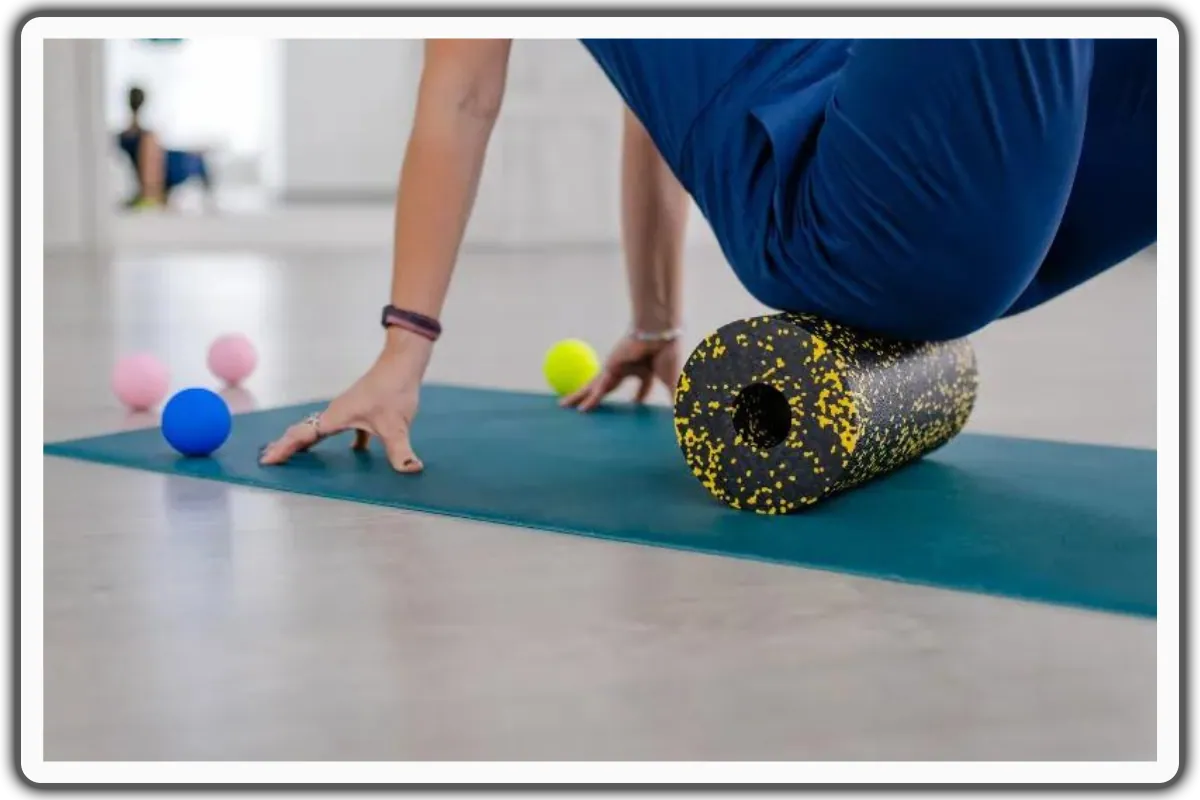
Amidst uncertainties, it’s easy to overlook the subtle signs our bodies send us, especially regarding hip pain. Hip pain can become an unwelcome companion, whether it is due to prolonged sitting at our home workstations or the emotional toll of navigating unprecedented times
That’s why we’ve curated a list of the top tools and exercises specifically designed to target hip pain. So fret not because we've got your back—or rather, your hips! These tools will help you alleviate pain and regain control of your body.
So say goodbye to the days of relying solely on painkillers and hello to a more holistic approach to hip pain management.
Hip Pain Relief Exercises & Tools
Here are the exercises and tools that are specifically designed to target and alleviate hip discomfort.
Exercises for Hip Pain Relief:
Hip Flexor Stretch: Stretches the hip flexors. Kneel on one knee with the other foot in front and gently lean forward to stretch the hip flexors.
Lacusa plat Glute Bridge: Strengthens the gluteal muscles and stabilizes the hips. Lie on your back with your knees bent, feet flat on the floor, and lift your hips off the ground, squeezing your glutes.ea laoret vestib vulput intege semper lectus portti.
Hip Abduction: Improves hip stability. Stand with a resistance band around your ankles and slowly move one leg sideways, away from the other leg, then return to the starting position.
Hip Extension: Enhances flexibility. Stand with one foot slightly behind the other and lift the back leg backward while keeping your upper body straight.
Seated External Hip Rotation: Reduces tension and enhances overall hip joint mobility. Sit on a chair with your knees bent at 90 degrees and place a ball or cushion between your knees. Squeeze the ball and hold for a few seconds.
Quadriceps Exercise, such as the Quadruped Hip Circles: Provides stability. Get on your hands and knees, and make circular motions one hip at a time.
Hip Flexion Exercise, like Standing Knee Raises: Reduces strain and discomfort by strengthening the hip muscles. Stand upright with your feet shoulder-width apart, then lift one knee, either right knee or left knee first, towards your chest while keeping your back straight, hold for a moment, and slowly lower it back down.
Seated Butterfly Stretch: Improves the range of motion in the hip joint. Sit on the floor with your knees bent, bring the soles of your feet together, and gently press your knees downward to feel a stretch in your inner thighs and hips.
Pigeon Pose: Stretches the hip and glute muscles. Sit on the floor with one leg straight behind and the other bent in front, and lean forward to stretch the hip and glute muscles.
Water Aerobics, also known as Aqua Aerobics or Water Exercise: Provides relief for individuals with hip pain, arthritis, or other joint-related issues.
Exercise Tools for Hip Pain Relief:
1. Foam Rollers
2. Resistance Band
3. Stability Ball
4. Massage Sticks
5. Yoga Strap
6. Yoga Blocks
7. Balance Disc
8. Sliders or Gliding Disc
Exercise with Hip Pain Relief Stretches
Let’s explore the exercises that can help relieve hip pain:
1 - Quad Rolls with Foam Roller
For this exercise, use a foam roller to alleviate hip pain.
Begin in a 4-point position, with your hands beneath your shoulders and your knees below your hips. Step back with both feet to move into a plank position, maintaining good alignment with your head, shoulders, hips, and toes. Place the foam roller inside your quad and cross your left leg to your right knee, your hips facing to the left side. Engage your core and move your body to roll the foam roller from your mid-calf area towards your lower calf. Repeat the movement several times. Relax and return to the starting position.
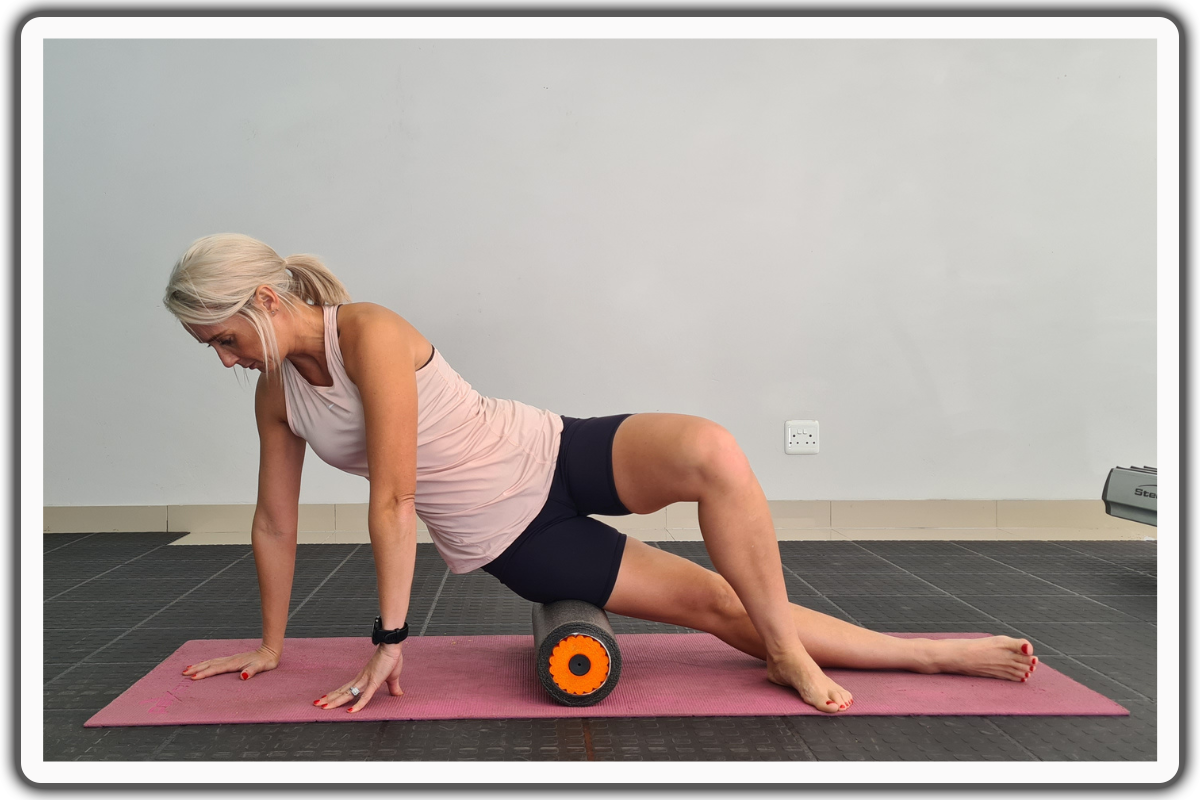
Quad Rolls with Foam Roller
Variation 1 - Quad Rolls with Foam Roller
Begin in a 4-point position, with your hands beneath your shoulders and your knees below your hips. Step back with both feet to move into a plank position, maintaining good alignment with your head, shoulders, hips, and toes. Place the foam roller along the side of your quad just above the knee. Stack your legs together, your body facing one side. Contract your core, then run the foam roller above your knee towards your hip and back several times. Repeat the movement on the opposite side.
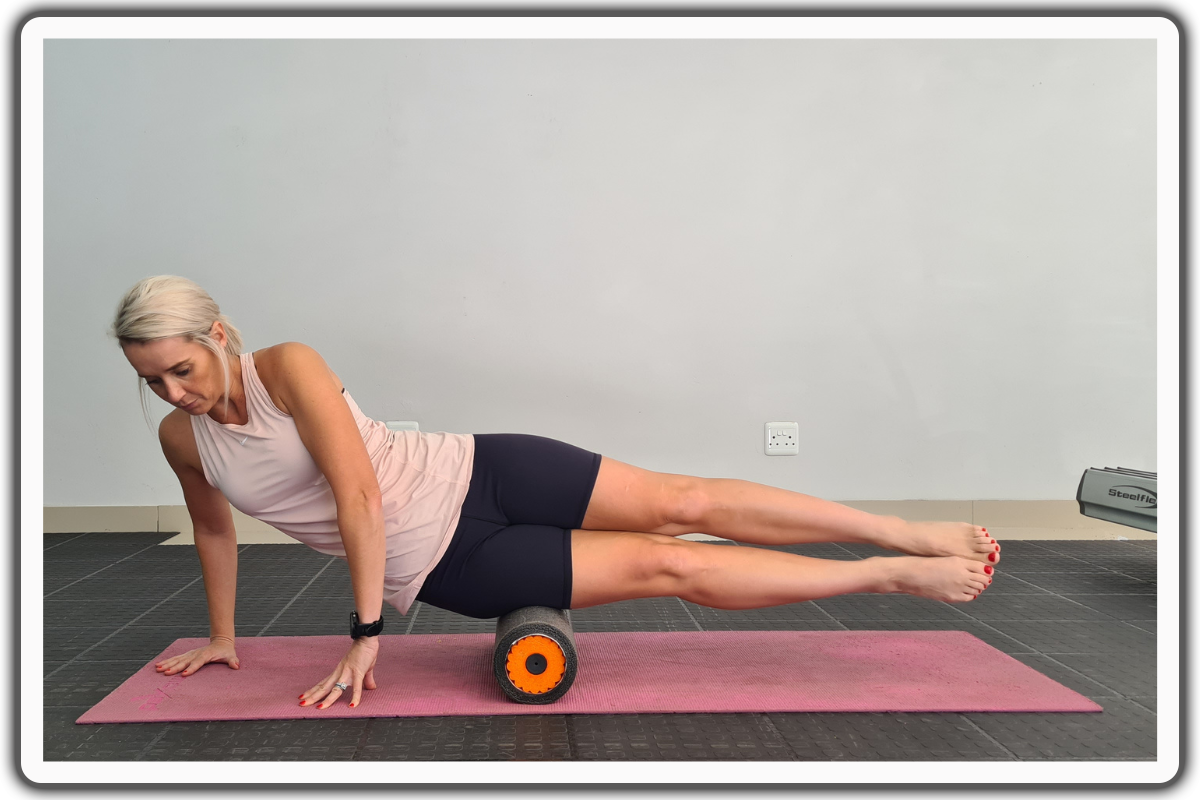
Variation 1
Variation 2 - Quad Rolls with Foam Roller
Begin in a 4-point position, with your hands beneath your shoulders and your knees below your hips. Step back with both feet to move into a plank position, maintaining good alignment with your head, shoulders, hips, and toes. Place the foam roller under your body, just above your knees, with your legs straight and toes lifted off the floor. Contract your core, then run the foam roller from the top of your knees, slowly progressing to your hip area and back. Repeat the movement several times.
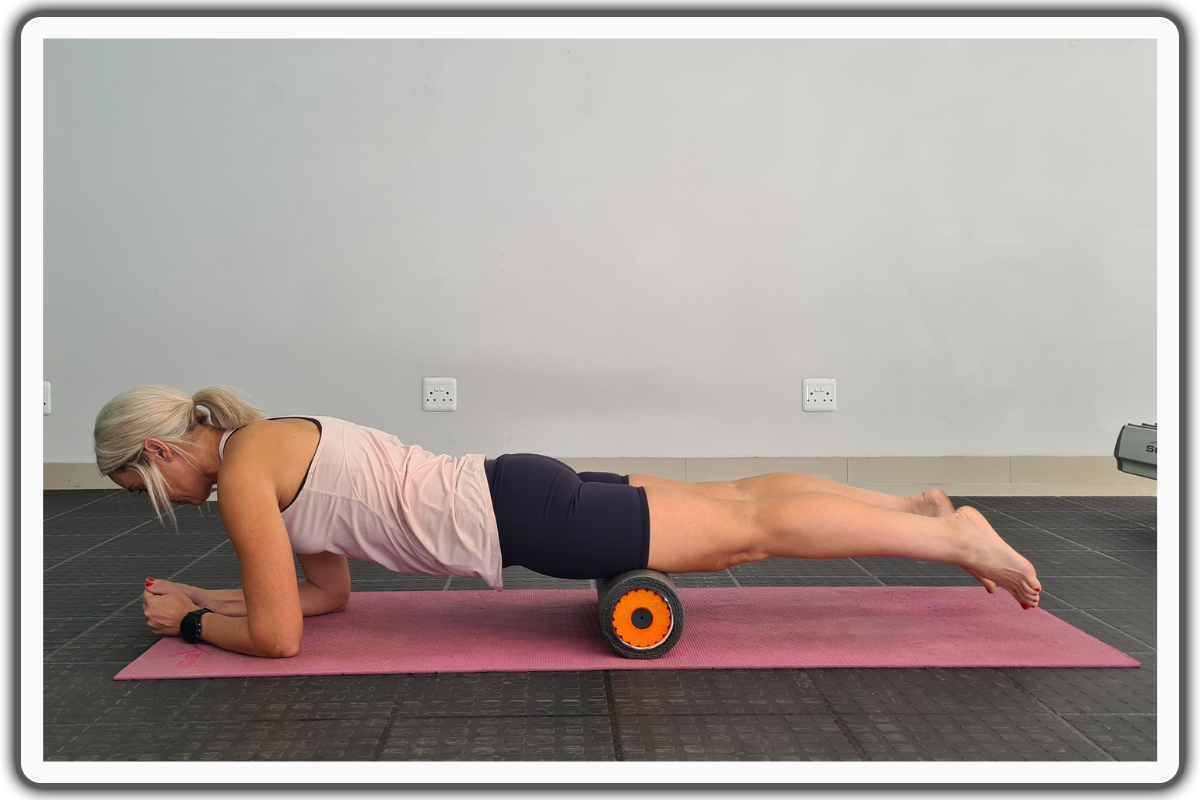
Variation 2
Variation 3 - Quad Rolls with Foam Roller
Begin in an upright sitting position on the floor with your knees bent, feet flat, and hands on the floor behind you for support. Place the foam roller under your quads. Engage your core and roll from the bottom of your seat to the top and back. Repeat the movement several times.
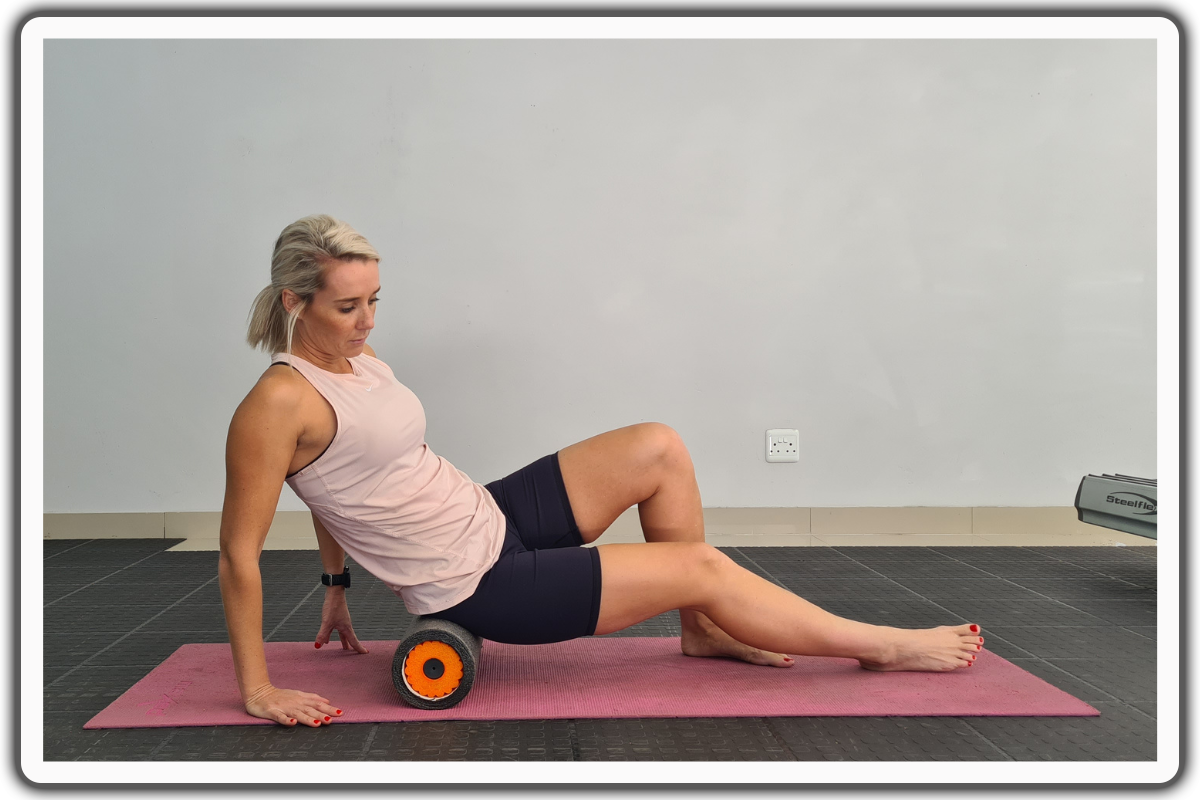
Variation 3
2 - Quad Exercise with Massage Stick
For this exercise, use a massage stick and a stable chair.
Begin in an upright sitting position on a chair with your feet flat on the floor, maintaining good alignment with your head, shoulders, and hips. Straighten your left leg out and place the massage stick against your quadriceps area. Run the massage stick in front of your thigh, from your hip to the top of your knee and back. Make the same motion to the inner thigh and under your thigh. Repeat the movement on the right leg.
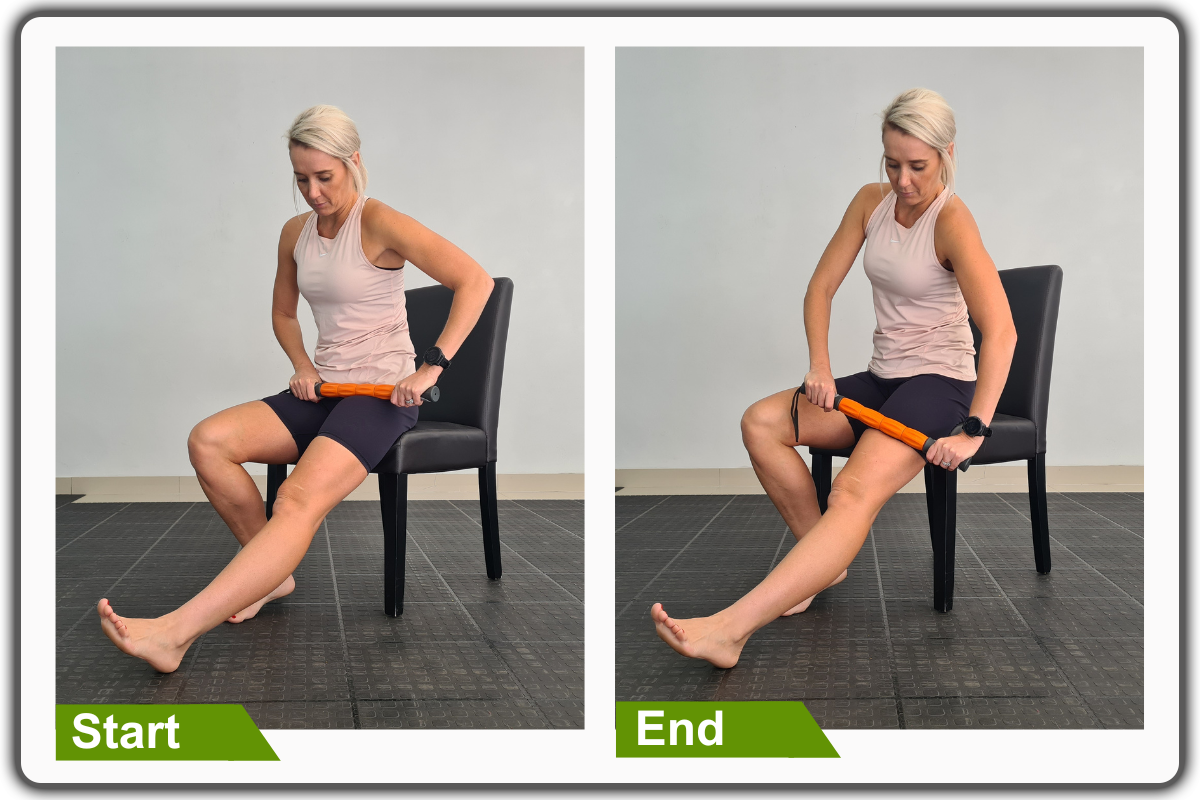
Quad Exercise with Massage Stick
3 - Quad Rolls with Massage Ball
For this exercise, you can use a variety of massage balls and utilize the wall for stability.
Begin in an upright sitting position on the floor with your knees bent, feet flat, and your hands behind you on the floor for support. Place the small massage ball under your hips. Engage your core and roll from the bottom of your seat to the top and back. Repeat the movement several times. Then relax and return to the starting position.
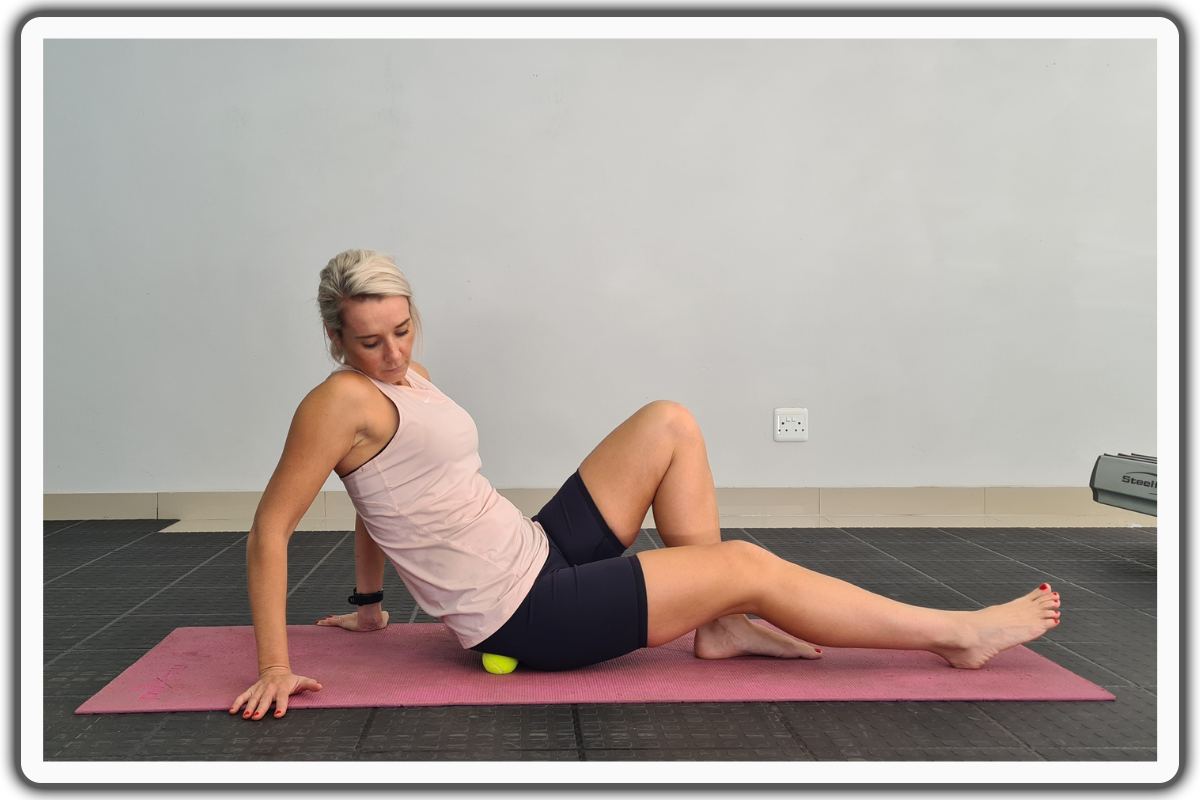
Quad Rolls with Massage Ball
Variation 1 - Quad Rolls with Massage Ball
Begin in an upright sitting position on the floor with your knees bent, feet flat, and your hands behind you on the floor for support. Place the small massage ball under your quads. Engage your core and roll from the bottom of your seat down to your thighs and back. Repeat the movement several times. Then relax and repeat the sequence of movements on the opposite leg.
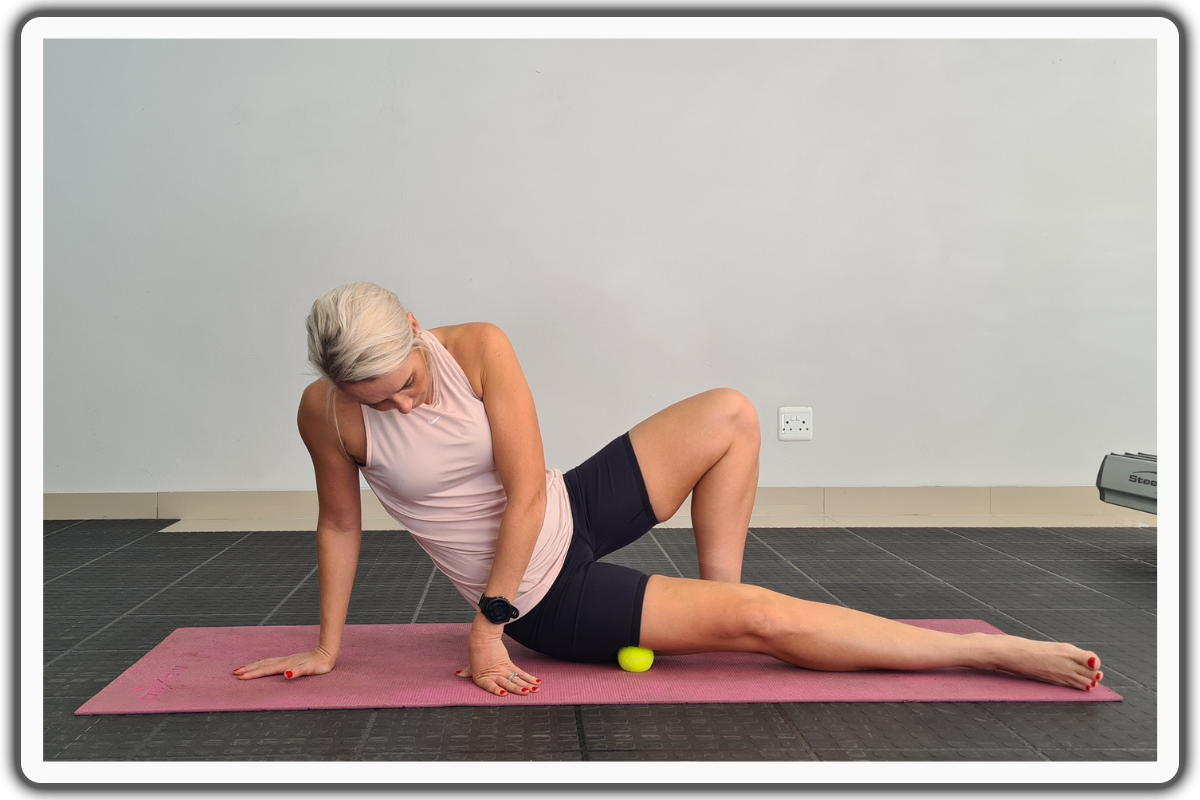
Variation 1
Variation 2 - Quad Rolls with Massage Ball
Move into a forearm plank position with your left knee bent sideways and your right knee straight. Maintain good alignment with your body. Place the small massage ball under your hip and keep your elbows on the floor for support. Tighten your core and roll from the top of your hips and down. Repeat the movement several times. Relax and return to the starting position. Then repeat the movement on the opposite side.
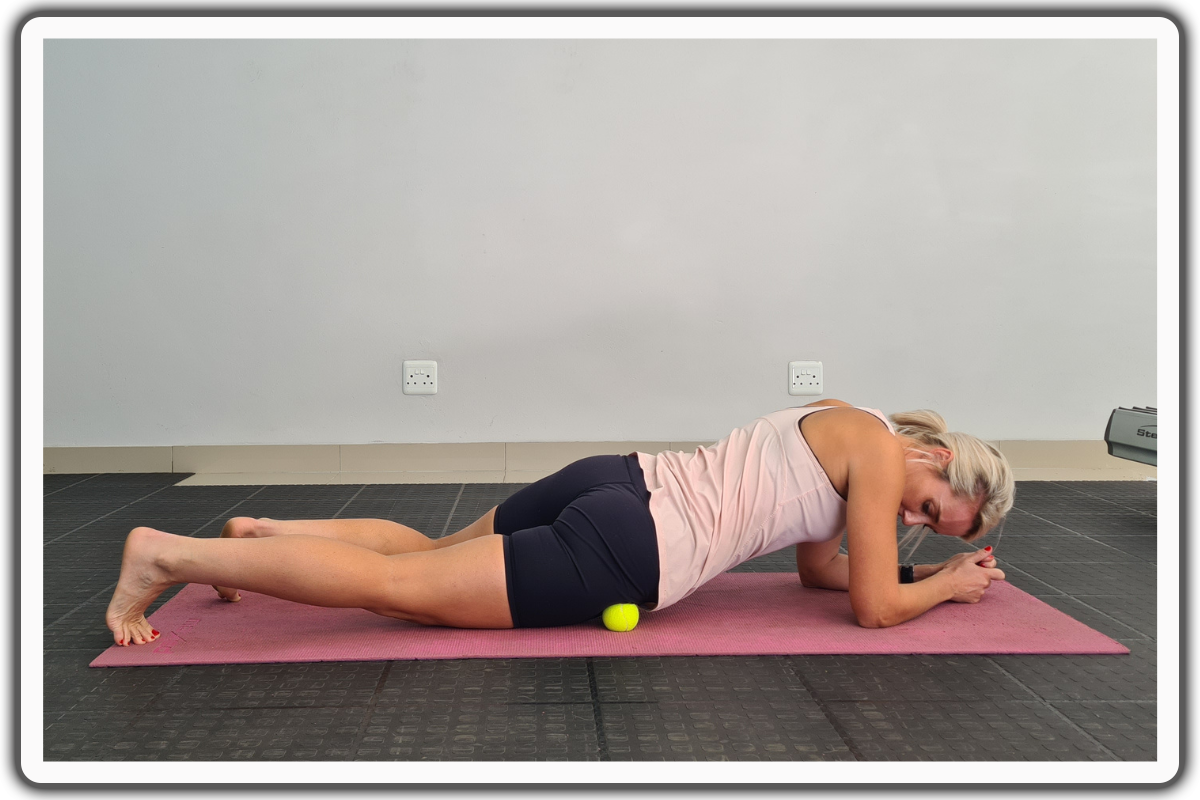
Variation 2
Take Charge of Our Hip Health
I am thrilled to share about the journey toward taking charge of our hip health! Throughout this process, we have explored various ways to maintain and improve the health of our hips. We have learned so much about how to keep our hips strong and functional with these stretches, exercises, and exercise tools.
It is truly empowering to know that we can take control of our health and prevent hip issues before they arise. By implementing these hip exercises into our regular routine, we can ensure that our hips remain healthy. It also allows us to continue doing the activities we love. So let's continue on this path of hip health and live our lives to the fullest!
FAQs
What is the most common hip injury?
Hip osteoarthritis, which is also called hip arthritis, is the most common hip injury. It’s a joint disease that causes the cartilage that protects the bones to break down slowly over time. This disease often makes The hip painful, stiff, and hard to move. Older people are especially likely to have it. It can be caused by things like age-related wear and tear, hip accidents in the past, genetics, and how you live your life.
Does physical therapy help with hip pain?
Yes, physical therapy can be very effective in helping with hip pain. It’s a conservative and non-invasive approach to managing various hip injuries and conditions. Physical therapy involves assessing, diagnosing, and treating musculoskeletal issues related to the hip joints and surrounding structures.
Physical therapy can be particularly beneficial for recovering from hip surgeries, such as hip replacements or labral repairs, as it helps rehabilitate and regain functional abilities. It’s advisable to consult with a physical therapist if you’re experiencing excessive hip pain.
How do you get rid of hip and joint pain?
Here are several strategies to help alleviate hip or knee and joint pain.
1. Exercise regularly. Engage in low-impact exercises, such as swimming or cycling. This helps strengthen the muscles surrounding the joints. Stretching exercises increase flexibility and release tension in the hip muscles, while strength exercises target the hip muscles for increased stability and reduced hip pain. Adding an upper body workout promotes better posture and alignment.
2. Physical therapy can help provide flexibility and range of motion, alleviating joint pain.
3. Maintain a healthy weight to manage hip or knee pain and joint pain. Adopt a balanced diet in addition to regular exercise to reduce the burden on the joints.
4. Always practice good posture. Minimize joint pain by maintaining proper alignment when sitting, standing, or lifting objects.
5. Adding joint-friendly supplements helps repair damaged cartilage and reduce inflammation, thus improving joint health.
6. In more severe cases, medical interventions may be necessary.
